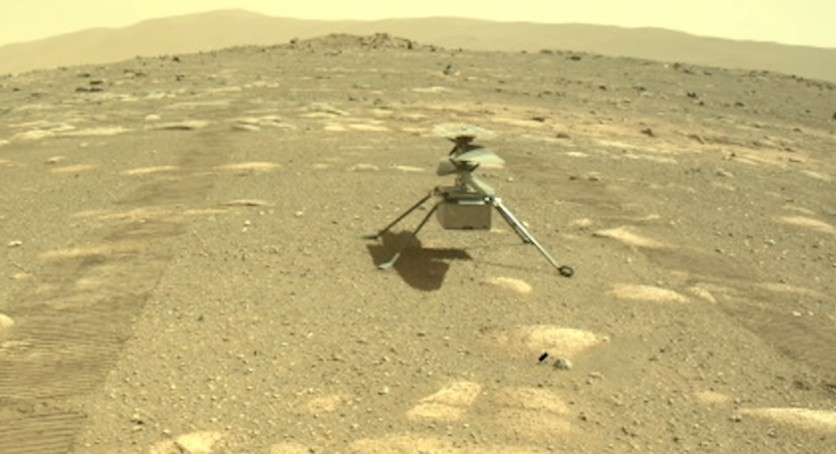On Saturday, Apr. 4, the NASA Mars Perseverance rover released its first drone on the red planet. The Ingenuity helicopter is expected to fly one week from now.
The $85 million-worth drone will also be used to test the capabilities of the flying automobiles that will be made in the future. The space agency also said that the next task that the helicopter should do is to survive the whole night in the new environment.
Ingenuity Helicopter Sets Foot on Martian Soil

In a report by Space.com, NASA confirmed that the special drone, Ingenuity, has officially landed on Mars' surface. The space trip took 293 miles or 471 million km while it was aboard the Perseverance rover.
On Twitter, the space agency's officials based in Pasadena, California revealed via Twitter that the drone could follow up its next achievement after its landing: its capability to withstand the night on the red planet.
#MarsHelicopter touchdown confirmed! Its 293 million mile (471 million km) journey aboard @NASAPersevere ended with the final drop of 4 inches (10 cm) from the rover's belly to the surface of Mars today. Next milestone? Survive the night. https://t.co/TNCdXWcKWE pic.twitter.com/XaBiSNebua
— NASA JPL (@NASAJPL) April 4, 2021
Ingenuity's mechanism was created to suit Mar's harsh conditions, especially the warm nights. This helicopter is also powered by solar energy run by a rechargeable battery.
Moreover, its lightweight design at 4lbs or 1.8 kilograms made it an adaptive accessory to the rover's belly. Additionally, the nuclear-powered system of the Perseverance maintains the helicopter's temperature. To power the heater, Ingenuity uses its internal battery.
"This heater keeps the interior at about 45 degrees F through the bitter cold of the Martian night, where temperatures can drop to as low as -130 F (minus 90 degrees Celsius)," Bob Balaram, the Chief Engineer of NASA's Mars drone project said in a statement via NASA Science Mars Helicopter Tech Demo.
NASA Says Ingenuity Will Fly on April 11
NASA declared that the drone will leave on Apr. 11, following its data dissemination that will happen on the next, Apr. 12. The officials also unveiled that what makes this special is its capacity to assess the future for flying automobiles.
For the documentation, there are two cameras that Ingenuity possesses. The sightings are also seen via the Perseverance rover. NASA also plans to run a test for the four-rotor blades, which have 2,537 revolutions per minute.
Furthermore, the rover will be distant from the drone during the process at 16.5 feet away. The agency also said that it will carry out longer flights in the Jezero Crater, and each flight should not exceed over 16.5 feet or 5 meters.
For it to happen, the drone should first endure the cold Mars night using its dedicated power heater, which maintains its temperature at 5 degrees Fahrenheit or -15 degrees Celsius.
Over time, the officials will look after the drone's performance and temperature to guarantee its capability for survival. If the missions of surviving succeed, they will now move for another series of evaluations.
The Perseverance rover, meanwhile, will still stay on the Jezero Crater for the next two years in hopes of looking for any signs of ancient life. The rock samples will be gathered by the machine and will be sent to the Earth for another study.
Related Article : NASA's Perseverance Rover Records New Sounds From Red Planet Through SuperCam Instrument
This article is owned by Tech Times
Written by Joen Coronel
ⓒ 2025 TECHTIMES.com All rights reserved. Do not reproduce without permission.




